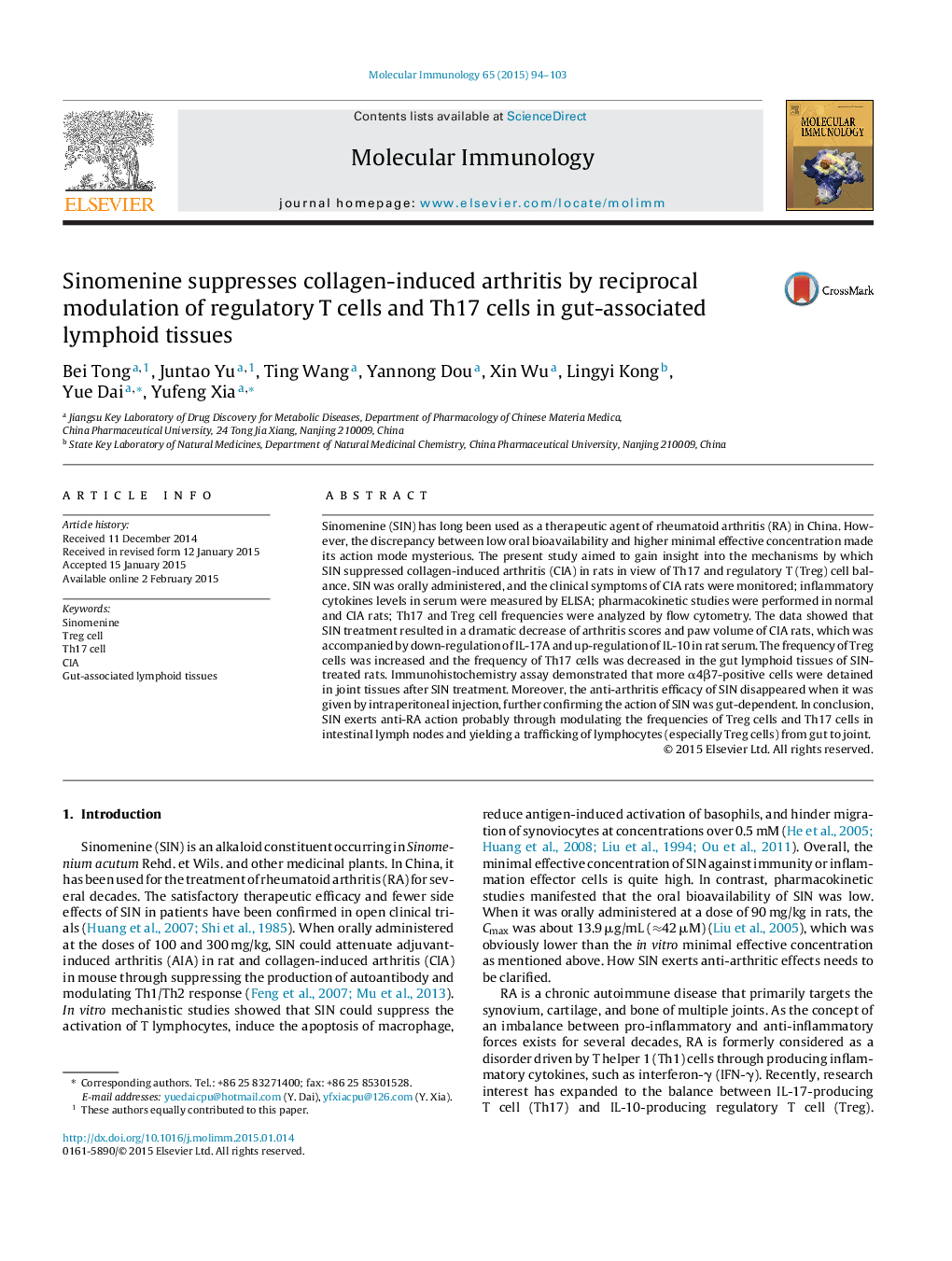| Article ID | Journal | Published Year | Pages | File Type |
|---|---|---|---|---|
| 2830631 | Molecular Immunology | 2015 | 10 Pages |
•Sinomenine, administered orally, markedly attenuates the clinical signs of CIA.•Sinomenine regulates the balance of Th17/Treg cells in intestinal lymph node.•Sinomenine induces the migration of Treg cells from gut to joint.
Sinomenine (SIN) has long been used as a therapeutic agent of rheumatoid arthritis (RA) in China. However, the discrepancy between low oral bioavailability and higher minimal effective concentration made its action mode mysterious. The present study aimed to gain insight into the mechanisms by which SIN suppressed collagen-induced arthritis (CIA) in rats in view of Th17 and regulatory T (Treg) cell balance. SIN was orally administered, and the clinical symptoms of CIA rats were monitored; inflammatory cytokines levels in serum were measured by ELISA; pharmacokinetic studies were performed in normal and CIA rats; Th17 and Treg cell frequencies were analyzed by flow cytometry. The data showed that SIN treatment resulted in a dramatic decrease of arthritis scores and paw volume of CIA rats, which was accompanied by down-regulation of IL-17A and up-regulation of IL-10 in rat serum. The frequency of Treg cells was increased and the frequency of Th17 cells was decreased in the gut lymphoid tissues of SIN-treated rats. Immunohistochemistry assay demonstrated that more α4β7-positive cells were detained in joint tissues after SIN treatment. Moreover, the anti-arthritis efficacy of SIN disappeared when it was given by intraperitoneal injection, further confirming the action of SIN was gut-dependent. In conclusion, SIN exerts anti-RA action probably through modulating the frequencies of Treg cells and Th17 cells in intestinal lymph nodes and yielding a trafficking of lymphocytes (especially Treg cells) from gut to joint.
